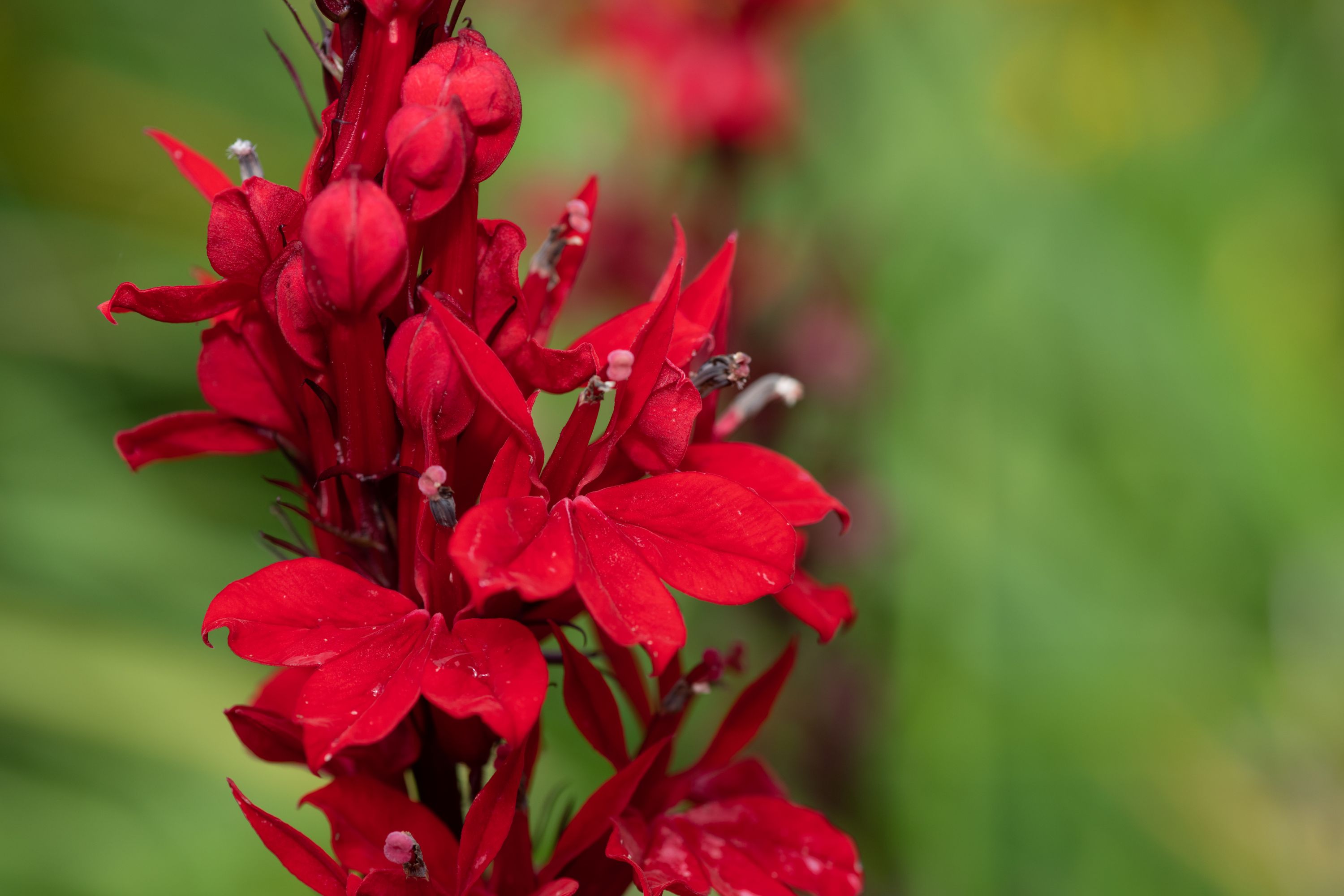Cardinal flower
(Lobelia cardinalis)

Description
Lobelia cardinalis, commonly known as the cardinal flower, is a perennial herbaceous plant species that belongs to the Lobeliaceae family. This plant species is native to North America and is widely distributed across the eastern United States. It is a popular garden plant, often grown for its strikingly beautiful deep-red flowers that bloom in late summer and early fall. In this article, we will provide detailed information about the taxonomy, morphology, distribution, ecology, and cultivation of Lobelia cardinalis. Taxonomy The scientific name of Lobelia cardinalis is Lobelia cardinalis L. The genus Lobelia is named after the Flemish botanist Matthias de Lobel, who was a prominent botanist during the 16th century. The specific epithet "cardinalis" is derived from the Latin word "cardo," which means hinge or pivot. This refers to the use of the plant in traditional medicine, where it was believed to be a remedy for heart ailments. Morphology Lobelia cardinalis is a perennial herbaceous plant that can grow up to 1.5 meters in height. It has an upright stem that is usually unbranched, but can occasionally produce lateral branches. The stem is covered in short, fine hairs, and can be green or purple in color. The leaves are alternate, lanceolate or oblong, and can be up to 20 cm long and 8 cm wide. They are dark green in color, with a smooth surface and serrated edges. The flowers of Lobelia cardinalis are the most striking feature of the plant. They are bright red and tubular in shape, with five petals that flare outwards at the mouth of the flower. The flowers are borne on tall spikes that can be up to 1 meter in height, and each spike can produce up to 50 flowers. The flowers bloom from late summer to early fall and are pollinated by hummingbirds and butterflies. The fruit of the plant is a capsule that contains many small, brown seeds. Distribution and Ecology Lobelia cardinalis is native to North America, where it is widely distributed across the eastern United States. It is found in wetland habitats, such as marshes, swamps, and the edges of streams and ponds. It prefers to grow in areas that are partially shaded and has a low tolerance for drought. Lobelia cardinalis is an important plant species in wetland ecosystems. It provides food and habitat for a variety of wildlife, including hummingbirds, butterflies, and bees. It is also used in traditional medicine as a remedy for heart ailments, asthma, and bronchitis. However, the plant contains toxic alkaloids that can cause vomiting, diarrhea, and in severe cases, heart failure. It should be used with caution and under the guidance of a healthcare professional. Cultivation Lobelia cardinalis is a popular garden plant, often grown for its beautiful flowers. It can be propagated by seed, division, or cuttings. Seeds should be sown in early spring and kept moist until they germinate. Division can be done in early spring or fall by dividing the clumps of the plant and replanting them in a new location. Cuttings can be taken from the stem of the plant in late summer or early fall and rooted in a well-draining soil. Lobelia cardinalis prefers to grow in moist, well-draining soils that are rich in organic matter. It can tolerate partial shade but prefers full sun. The plant requires regular watering, especially during dry spells. It should be fertilized with a balanced fertilizer once a month during the growing season. To prevent the spread of disease, the plant should be pruned regularly to remove dead leaves.
Taxonomic tree:







